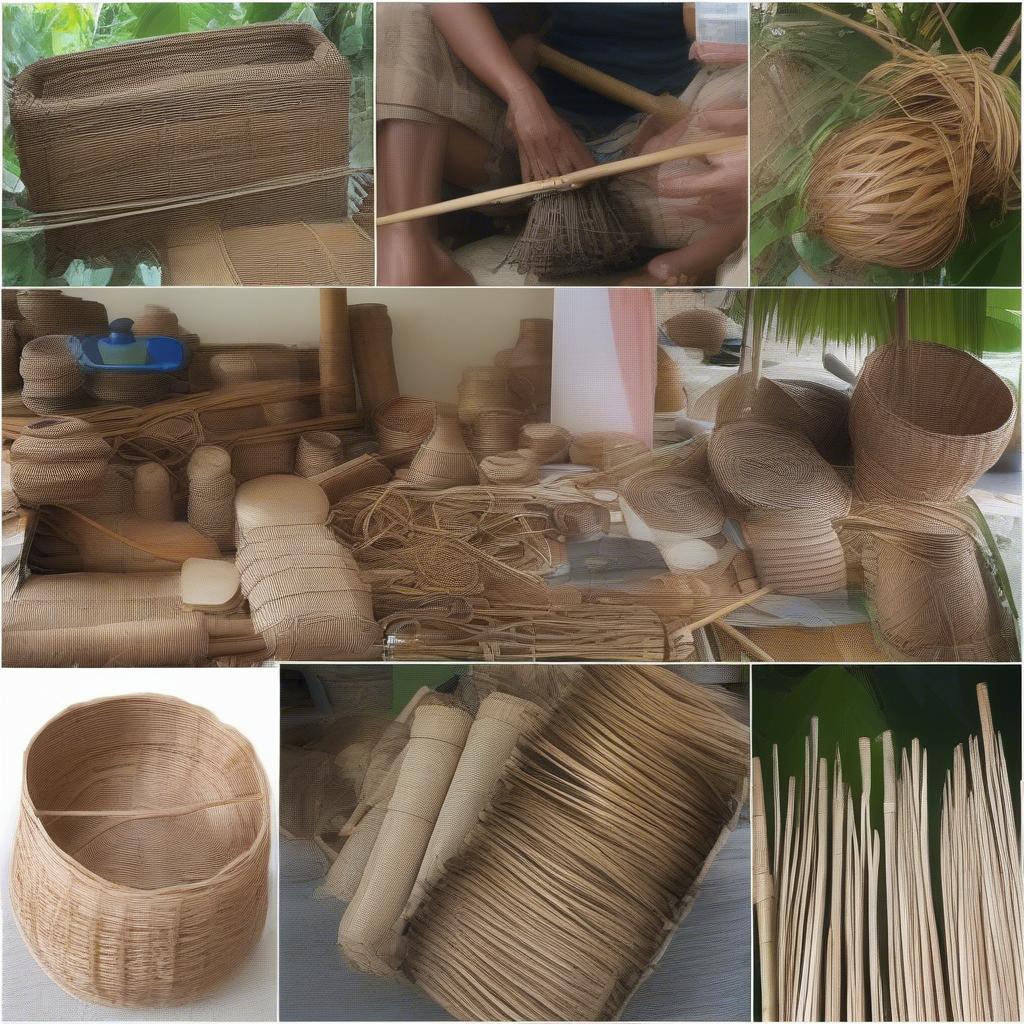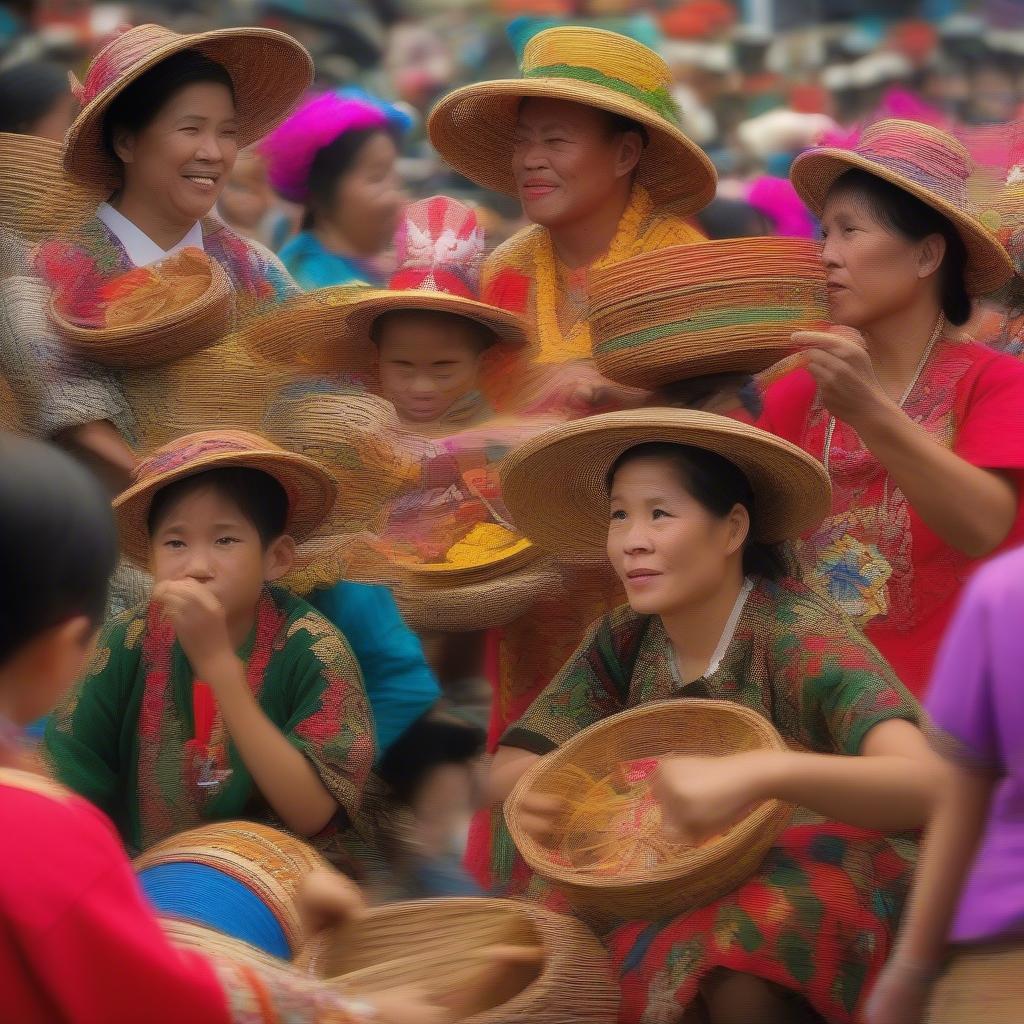Basket Weaving
Basket Weaving in the Philippines and Their Significant Contribution
Basket weaving in the Philippines is a centuries-old tradition deeply ingrained in the country’s cultural heritage. From intricate designs passed down through generations to the innovative use of sustainable materials, Filipino basket weaving represents a significant contribution to both the local economy and the global art scene.
The Rich History of Basket Weaving in the Philippines
Basket weaving in the Philippines isn’t simply a craft; it’s a narrative woven through time, reflecting the diverse cultures and resourcefulness of the archipelago’s inhabitants. For centuries, Filipinos have utilized readily available materials like bamboo, rattan, abaca, and nito vines to create baskets for a myriad of purposes, from everyday use to ceremonial objects. Each region boasts unique weaving styles and patterns, showcasing the artistry and ingenuity of the local artisans. These traditions are often passed down through families, ensuring the preservation of this valuable cultural heritage.
Materials and Techniques: A Symphony of Nature and Skill
Filipino basket weavers demonstrate an intimate understanding of their natural environment, utilizing various indigenous materials with masterful skill. Rattan, known for its strength and flexibility, is a popular choice for creating durable baskets. Bamboo, abundant and readily available, lends itself to intricate designs. Abaca, a type of banana fiber, is valued for its strength and resilience, while nito vines add a touch of delicate beauty to finished pieces. The techniques employed vary from region to region, resulting in a diverse range of basket styles, each with its own unique charm. Some techniques involve intricate coiling and twining, while others utilize plaiting and weaving methods.
 Materials and Tools Used in Philippine Basket Weaving
Materials and Tools Used in Philippine Basket Weaving
Basket Weaving’s Economic Impact: Empowering Communities
Basket weaving plays a vital role in the Philippine economy, particularly in rural communities. It provides a sustainable livelihood for countless artisans, allowing them to support their families and preserve their cultural heritage. The growing demand for handcrafted goods, both locally and internationally, has created new opportunities for these artisans. Cooperatives and fair-trade organizations have emerged, providing access to wider markets and ensuring fair prices for their products. This economic empowerment contributes to the overall development of these communities.
Cultural Significance: Beyond the Basket
What is the cultural significance of basket weaving in the Philippines? Basket weaving transcends its functional purpose, serving as a powerful symbol of Filipino identity and cultural pride. Baskets are not merely containers; they are expressions of artistic talent, cultural narratives, and community values. They are used in ceremonies, festivals, and everyday life, reflecting the deep connection between the Filipino people and their craft. The intricate patterns and designs often hold symbolic meaning, representing stories, beliefs, and traditions passed down through generations.
 Cultural Significance of Basket Weaving in the Philippines
Cultural Significance of Basket Weaving in the Philippines
“Basket weaving is more than just a craft; it’s a living testament to Filipino resilience, ingenuity, and artistic expression.” – Maria Reyes, Cultural Anthropologist
The Future of Filipino Basket Weaving
The future of basket weaving in the Philippines hinges on the continued support for local artisans and the preservation of traditional techniques. By promoting sustainable practices, empowering communities, and fostering appreciation for this unique art form, we can ensure that this rich tradition continues to thrive for generations to come. Innovations in design and the exploration of new markets offer exciting possibilities for the future of Filipino basket weaving, while maintaining its cultural integrity.
“The intricate beauty of Filipino baskets speaks volumes about the dedication and artistry of the weavers. It’s crucial that we support their craft and ensure its continued growth.” – Juan dela Cruz, Filipino Artisan
Conclusion
Basket Weaving In The Philippines And Their Significant Contribution to the country’s cultural heritage and economy cannot be overstated. It’s a craft that embodies the spirit of the Filipino people – their resilience, creativity, and deep connection to their roots. By supporting Filipino basket weavers, we are not just buying a beautiful product; we are investing in a vibrant cultural tradition.
FAQ
-
What are the most common materials used in Filipino basket weaving?
- Rattan, bamboo, abaca, and nito vines.
-
Where can I buy authentic Filipino baskets?
- You can find them in local markets, craft shops, and online platforms that support fair trade.
-
How can I learn more about Filipino basket weaving techniques?
- Research online, visit museums, or even participate in workshops offered by cultural centers.
-
Are there any organizations that support Filipino basket weavers?
- Yes, numerous cooperatives and fair-trade organizations work with artisans to provide them with resources and market access.
-
What is the significance of the different patterns found in Filipino baskets?
- Many patterns hold symbolic meanings, reflecting local stories, beliefs, and traditions.
-
How long does it take to weave a traditional Filipino basket?
- It depends on the complexity of the design and the size of the basket. It can range from a few hours to several weeks.
-
Are Filipino baskets eco-friendly?
- Yes, most are made from sustainable and biodegradable materials.
Common Situations and Questions
-
Situation: You are looking for a unique and ethically sourced gift. Question: Where can I find high-quality, handcrafted Filipino baskets?
-
Situation: You are interested in learning a new craft. Question: Are there any workshops or classes available to learn Filipino basket weaving?
Further Reading and Related Articles
- Explore the artistry of [link to a hypothetical article on specific regional weaving styles].
- Learn more about the [link to a hypothetical article on sustainable materials used in basket weaving].
Please contact us at Hanoi, Vietnam or Tech Avenue, Suite 12, San Francisco, CA 94105, USA for any assistance. We have a 24/7 customer support team.
